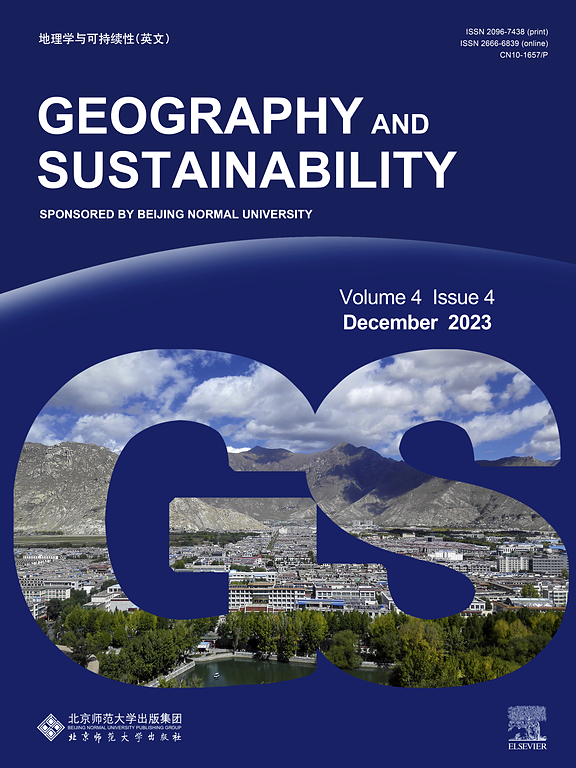Integrated outcomes of large-scale ecological restoration projects on biodiversity–eco-environment–society in China
IF 8
1区 环境科学与生态学
Q1 GEOGRAPHY, PHYSICAL
引用次数: 0
Abstract
China has executed large-scale ecological restoration projects (ERPs) to meet the goals of environmental protection and economic development. Yet, the integrated outcomes of these projects on the biodiversity–eco-environment–society dimensions remain unclear, but when available could be insightful for adaptation and adjustments, particularly in this United Nations Decade on Ecosystem Restoration (2021–2030). Based on multi-source data, we identified the categories and quantities of large-scale ERP implementation in the county-level. By comparing the time-series multiple factors of implemented vs unimplemented counties, we quantify the contributions and compare the relative effects of up to six different ERPs. Combining random forest, spatial autocorrelation, and network analysis, we explore the key factors that affect the contributions of ERPs. Here, we show that the triple dimensions in the low ERP group (regions implementing 0–2 projects) produced better outcomes than the high ERP group (regions implementing 3–5 projects) in relatively developed regions, while the high ERP group has more gains than the low ERP group in relatively less-developed regions. Notably, regional characteristics and different social assets mediate the ERP contributions, while human capital and financial capital have important roles. Overall, the ERPs generated positive contributions and could increase the network stability of multi-dimensions in relatively less-developed regions, but it may lead to imbalances in some factors (i.e., mammal species conservation, and human capital). To continue to minimize the negative effects from past, and to improve the returns of ERP policy and investments, more timely and adaptive management of ERPs are needed, especially in relatively less-developed regions.

求助全文
约1分钟内获得全文
求助全文
来源期刊

Geography and Sustainability
Social Sciences-Geography, Planning and Development
CiteScore
16.70
自引率
3.10%
发文量
32
审稿时长
41 days
期刊介绍:
Geography and Sustainability serves as a central hub for interdisciplinary research and education aimed at promoting sustainable development from an integrated geography perspective. By bridging natural and human sciences, the journal fosters broader analysis and innovative thinking on global and regional sustainability issues.
Geography and Sustainability welcomes original, high-quality research articles, review articles, short communications, technical comments, perspective articles and editorials on the following themes:
Geographical Processes: Interactions with and between water, soil, atmosphere and the biosphere and their spatio-temporal variations;
Human-Environmental Systems: Interactions between humans and the environment, resilience of socio-ecological systems and vulnerability;
Ecosystem Services and Human Wellbeing: Ecosystem structure, processes, services and their linkages with human wellbeing;
Sustainable Development: Theory, practice and critical challenges in sustainable development.
 求助内容:
求助内容: 应助结果提醒方式:
应助结果提醒方式:


